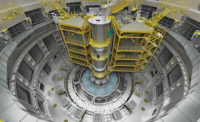Willow and Parsons Corp. have won a five-year contract from Dallas Fort Worth International Airport to create and support a digital twin for the maintenance and operations of Runway 18R/36L and Terminal D, which were recently renovated as part of DFW’s airport-wide modernization.
“To our knowledge, it’s the first digital twin of an active runway in the industry,” says Shaun Klann, head of strategic growth at Willow. “They’re using it to help understand how different events, weather events, things of that nature, impact operations and how to properly bring the airport back in the normal operations, faster.”
A digital twin is a virtual representation of an object or system that spans its lifecycle, is updated from real-time data, and uses simulation, machine learning and reasoning to aid decision-making. In Willow’s case, it’s a cloud-based twin that’s informed by 3D models drawn from the recent expansion and physical scans of over 17,000 acres of DFW’s assets, including the runway. Eventually, 40 years of accumulated information from the airport will be folded into the project.
Runway 18R/36L and Terminal D, as renovation projects, had ample information available to fold into the DFW digital twin. All data for FAR Part 139, a regulation that requires the FAA to issue airport operating certificates including field inspections, is being added into the digital twin, according to Parsons, as well as weather station data and DFW’s enterprise asset-management system and physical information from Autodesk Civil 3D models.
“They had multiple disparate data sources that they were looking to unify,” said Howard Shotz, technical director of asset management at Parsons. “That was our task, in this proof of concept to say, ‘Can we, through a single pane of glass, show the unique attributes of these systems simultaneously?’”
Much more than what’s visible to the naked eye is available in the twin, Shotz said. Runway 18R/39L is composed of nearly 4,000 concrete slabs, all labeled in the twin. The runway is 13,500-ft-long, 200-ft-wide and has about 4,000 runway lights, as well as signs and weather stations.
As Runway 18R/36L and Terminal D near completion over the next five years, the project’s digital twin will eventually connect, catalog and integrate all of DFW’s landside and airside infrastructure, possibly enabling better informed decision-making and more consolidated workflows.





Post a comment to this article
Report Abusive Comment